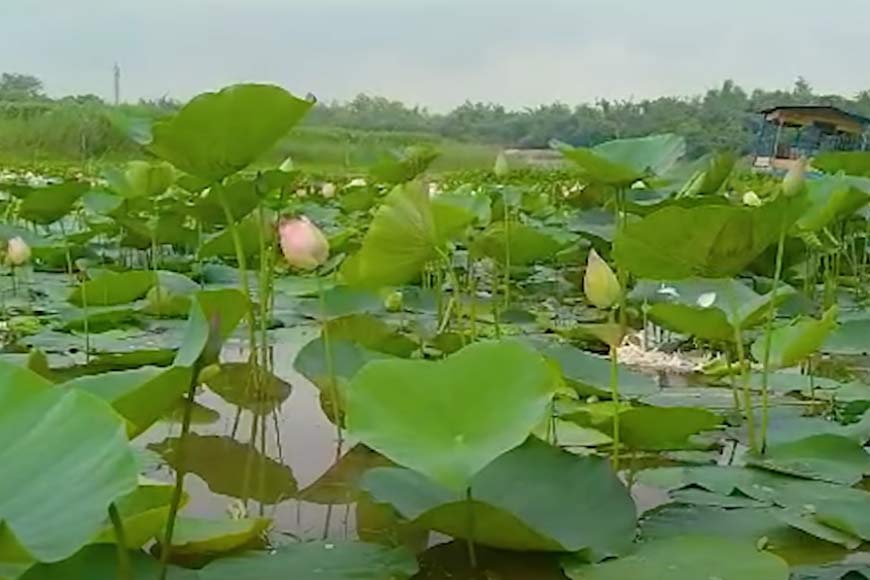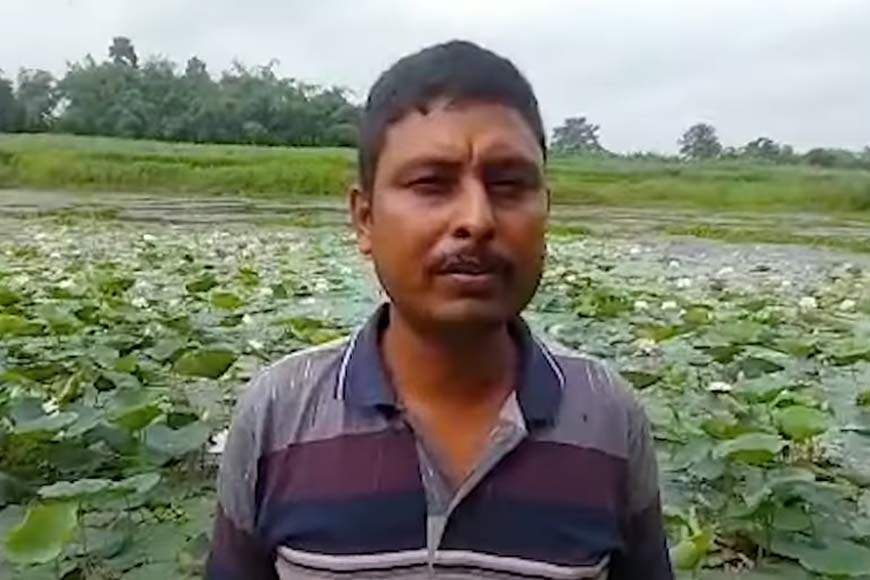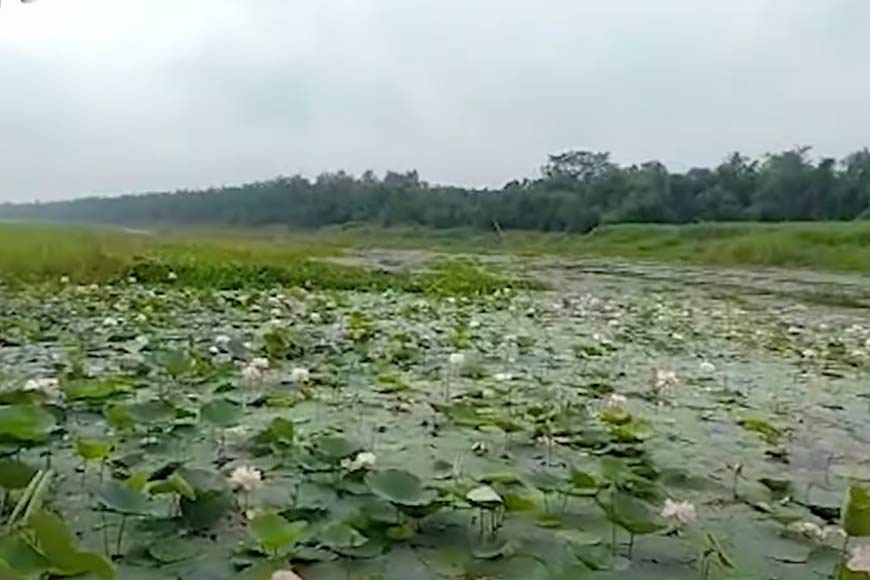Jalangi river turns into a lotus colony, thanks to RPF worker Nishit Mondal - GetBengal story

The Jalangi River, formerly known as Kharia, is an arm or distributary of the Ganges river that originates from Ganges or Padma near Bhagawangola in the Murshidabad district of West Bengal. The length of the river 233 km, and it discharges into Bhagirathi-Hooghly near Nabadwip in West Bengal. Many famous cities like Krishnanagar, Tehatta,Mayapur, and Nabadwip are located on the banks of the river.
The actual age of Jalangi is still unknown. It is believed that it came into existence only a few hundred years ago, shown in Van den Brouck’s map. But recently, the water of Jalangi became contaminated, not because of any industrial sites but because of domestic and agricultural sites. The low rainfall has also affected the river. As a result, the water level has dropped and the river is filled with algae, people also throw flowers, pots, and garlands, which pollute the river. As a result of this, fish have also been dying.
 Nishit Mondal, an RPF employee
Nishit Mondal, an RPF employee
To combat water pollution and restore the beauty of Jalangi, an RPF worker named Nishit Mondal, has been successful in blooming lotus on the Jalangi river, after making efforts for two years. He took the initiative to turn the river into a lotus colony. He had seen ponds or lakes filled with lotus, which inspired him to implement that on Jalangi. Nishit Mondal tried blooming lotuses the previous year as well but failed. After much effort and experimentation, he finally helped them bloom this year. The locals are happy with the beauty and have even stopped throwing waste into the river. Nishit loves to farm rare flowers and fruits. He produced lotus seeds and saplings on the terrace of his residence, which he used to fill the river with.
Lotus is not seen in most places, it has become rare, which is why, he decided to plant them on Jalangi. The initiative is not a small one, hence, it was difficult for Nishit alone to take care of the lotus plantation all by himself. The locals, mostly youths, helped him with his work. They kept a watch on the river and ensured nobody could harm the plants, nor could they steal them. Nishit is very particular with his work, he completed his work, saw the lotus blooming, and only then could he return home peacefully.
Lotus is a holy plant for Indians, which is why it is used in many rituals and worships. It is also known as the sacred lotus or laxmi lotus. Lotus plants are adapted to grow in the flood plains of slow-moving rivers and delta areas. Stands of lotus drop hundreds of thousands of seeds every year to the bottom of the pond. While some sprout immediately, and most are eaten by wildlife, the remaining seeds can remain dormant for an extensive period of time as the pond silts in and dries out. During flood conditions, sediments containing these seeds are broken open, and the dormant seeds rehydrate and begin a new lotus colony.
The lotus can be grown in a wide variety of ways, from free standing bowls on your patio to a pond in your backyard. Lotus needs 6 hours of sunlight a day. It has to be kept away from flowing water or fountains. The growing leaves cannot be submerged in water. A young lotus has to be protected from birds and crustaceans. It is fertilized in the summer, and they flower from December to early April.
 Jalangi River transformed into a lotus colony
Jalangi River transformed into a lotus colony
There are two ways in which the lotus can be planted in a dam or lake:
1. Cut a 150 mm piece out of the side of the nursery pot, NOT THE BOTTOM. Then place the plant in a sunny spot in 30-50 cm of still water near the edge of your dam. Push some mud from the dam against the side of the pot where the section has been removed.
2. Take the lotus out of the nursery pot very carefully, trying not to disturb the roots. Place it in a sunny spot in 30-50 cm of still water near the edge of the dam. Push mud from the dam around the plant.
Protective chicken wire needs to be placed around the plant for the first 3–4 weeks to protect it from water birds, yabbies, or crayfish in the dam or lake. New lotus plants will follow the receding water line in the dam or lake once they start growing. It is fertilized with special lotus satchels once a year, between December and January.










